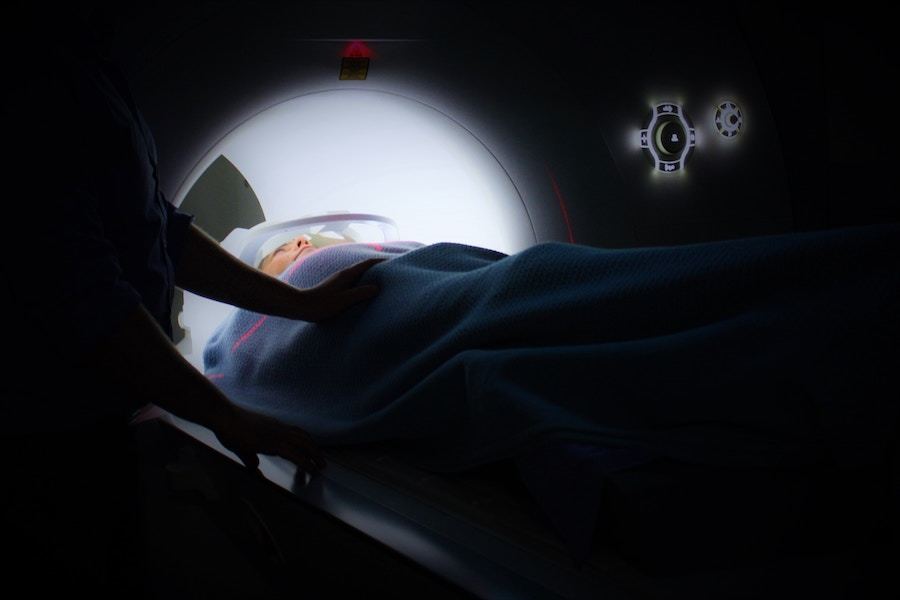What Is Virilization?

Virilization or masculinization is a condition that leads to women developing male-pattern hair growth and other male/masculine characteristics. Virilization is caused by an excess production of testosterone or androgens which are the male sex hormones. In women with virilization, there is an imbalance between the female hormone estrogen and male hormones, androgens.
Do Women Need Testosterone?
A certain amount of testosterone is absolutely necessary for proper growth, maintenance and functioning of the female body. Therefore testosterone is as important for the health of a woman as estrogen is. It’s all about the balance.
When a woman has too little testosterone in her system, she may experience lethargy, lack of muscle mass, mood changes and weight gain. So although it is a “male” hormone, women need it too – but in smaller amounts.
What Are Androgens?
Androgens are often called”male” sex hormones, as they lead to the development of body characteristics that are typically considered male. They increase during puberty in both boys and girls. During the reproductive age, the levels of androgens remain high, especially in men. There are several types of androgens:
- Testosterone: The main androgen, which is produced by the testicles in men and in small amounts in ovaries of women.
- Dihydrotestosterone (DHT): It is a metabolite of testosterone. DHT is more potent than testosterone, as it binds well to androgen receptors. DHT causes differentiation of penis, scrotum and prostate in the male fetus while inside the uterus. In adults, DHT causes the growth of prostate, sebaceous gland activity and balding in males.
- Dehydroepiandrosterone (DHEA), Androstenedione and Androstenediol: These androgens are produced by the adrenal glands of both males and females. They are also responsible for developing male sexual characteristics.
All androgens play a major role in developing male sexual characteristics in men, as well as women up to some extent. When androgens are excessive in women, it leads to symptoms of virilization.
What Are the Symptoms of Virilization?
When the female body develops physical characteristics that are similar to the male body, it is called virilization. That means due to excess of androgens in the body, women that are affected by virilization may develop secondary sexual characteristics.
Voice Changes
Excess testosterone can change your voice and make it deeper.
More Muscles Mass
If there is too much of testosterone in the system, a woman can develop more muscle mass. Increasing muscle mass can be an unwanted feature for many women.

Male Pattern Baldness
Excess testosterone may lead to hair loss and thinning. Balding (mainly around the temples and crown of your head) may also be visible over time, which can be a huge cosmetic concern for many women.
Acne
Excessive testosterone can lead to overactivity of the sebaceous glands. Acne occurs due to excessive production of sebum or natural oils when the sebaceous glands are overly active and when pores are blocked. Acne is often associated with the face, but can also be found on neck, chest, back and upper arms.
Enlarged clitoris
An increase in testosterone can cause growth of the clitoris. The clitoris is the equivalent organ to the penis in men, which is why it is affected by excess male sex hormones.
Irregular Periods
There should be a balance between estrogen and progesterone, which are the female hormones responsible for regular periods. When testosterone levels are up, this balance will be lost. As a consequence menstruation can be irregular or there will be no menstruation at all (amenorrhea). The duration between periods can also be prolonged.

Subfertility or Infertility
A hormonal imbalance can also lead to a dysfunction of the ovaries. This means that it can become more difficult for women to conceive. The ovaries produce ovum (egg) monthly as a reproductive cycle. When the ovaries do not function well, an ovulation may not take place regularly or at all, which makes it more difficult to conceive.
Breast Atrophy
Virilization can lead to a decrease in breast size in women.
Mood Changes and Poor Libido
When excess testosterone causes hormonal imbalance, a woman can experience mood swings and poor libido. This can lead to depression and anxiety, which are serious psychological conditions.
Hirsutism (Male Pattern Hair Growth in Women)
Increased body hair is another symptom of virilization. This condition is often referred to as hirsutism. Women with hirsutism develop male pattern hair growth. Body hair is dark and coarse and grows in areas such as face, chest, back, thighs or arms. The Ferriman-Gallwey Method is often used to assess the severity of the condition.
Hirsutism is a huge issue for many affected women, as body hair will grow in excess, darker and coarser, and in areas where women generally are not expected to be hairy. Especially excess facial hair can be very noticeable and many women adopt routines, such as shaving the face in order to manage their side burns, hair on the upper lip and around chin.
What Causes Virilization in Females?
Normal level of testosterone in a female should be between 15 – 70 ng/dl. When this level is exceeded, a woman can develop symptoms of virilization. Virilization occurs due to excessive production of testosterone, but can also be caused by certain medications, which act like testosterone. Excess testosterone in women can have many different causes, some of which are outlined below.
Polycystic Ovary Syndrome (PCOS)
PCOS is a common cause of virilization in women. It can lead to symptoms such as weight gain and obesity, irregular periods, acne, hair loss, excess hair growth (Hirsutism), anxiety and derpression. Some also develop insulin resistance which can lead to diabetes if left unmanaged.
PCOS is a chronic hormonal condition which affects around 10% of women of reproductive age. While the exact cause is unknown, affected women often have excessive male hormone (androgen) levels and signs of virilization.
Tumors
In rare cases, different ovarian and adrenal tumors can be a reason for excess androgens in women and lead to virilization.

Congenital Adrenal Hyperplasia
Congenital Adrenal Hyperplasia (CAH) is an inherited disorder in which the adrenal glands are enlarged and hormone production will be affected. When the cortisol levels are low, the body’s response to stress and illness is poor. In addition, the regulation of the body’s sodium and potassium levels is disturbed, which can be life threatening.
In CAH, androgens are produced in excess which may be visible when the person develops hirsutism and virilization. CAH, when severe, can be detected in infancy already. Milder forms of CAH may start to become evident during childhood. Apart from hirsutism and virilization, girls with CAH will grow rapidly during childhood but as they reach puberty early, growth will stop and they may not get very tall.

The treatment of CAH should aim at reducing excessive androgen production and replacing deficient hormones. With proper management, hormone replacement therapy and regular follow-up women with CAH can lead normal lives.
Cushing’s Syndrome
The body is exposed to high levels of Cortisol hormone due to over-production of cortisol from the adrenal gland or due to prolonged administration of prednisolone. This can lead to virilization.
Medications
Certain medications can cause virilization and hirsutism in females. Examples for this are systemic corticosteroids and fluoxetine (Prozac), which is prescribed for depression or Danazol which is used to treat endometriosis in women.
Hirsutism and Virilization
If you are looking to gain a good understanding of both hirsutism and virilization and how the two conditions are connected (hirsutism vs virilization), this comprehensive video might be interesting for you.
Treatment of Virilization in Females
Once you have been diagnosed and have a thorough understanding of what virilization actually is, you can start to work on a treatment plan with your doctor. Management depends on proper diagnosis and addressing the root cause and the symptoms. Frequent follow ups are necessary if a hormonal replacement therapy is prescribed. Laser hair removal, treatment of acne, treatment of hair loss should be addressed accordingly. Maintaining a healthy weight, eating a balanced diet and regular exercise (such as yoga) is also often encouraged.
